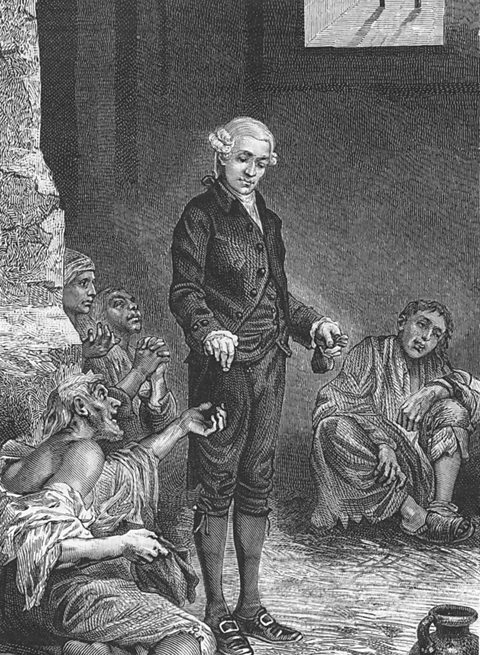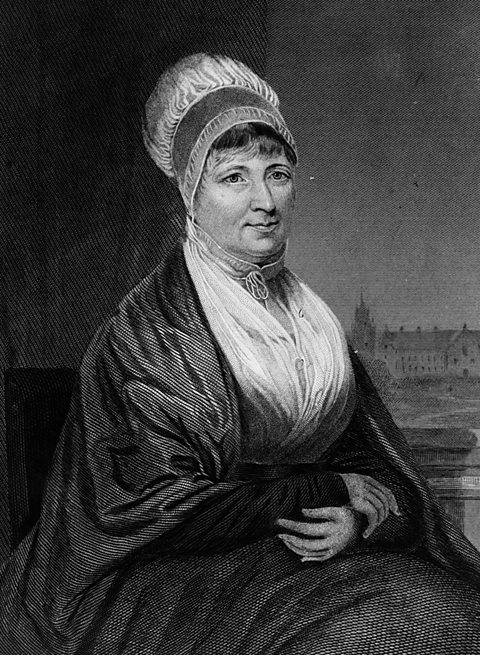The need for prison reform
In 1553, Edward VI converted the royal palace of Bridewell into a House of Correction. During the Tudor period, Justices of the Peace began to use Houses of Corrections, also called Bridewells, as places to attempt to reform inmates through supervised work.
However, before 1700, prisons were more commonly just holding stations for suspects before trial or criminals awaiting punishment. By 1700, there were 14 prisons in London, some of which were designated for different types of crime, eg The Clink, Southwark for religious prisoners, Newgate for general criminals and King's Bench, Southwark for debtors.
In 1750, there were only around 4,000 people in prisons in Britain. These numbers had been kept low by the use of transportation to America, however when this ended in 1776, prison populations rose dramatically and became a cause of concern. However, conditions were poor.
Prisons were run by towns and counties and there were no rules about how prisons should be run. Many prison buildings were not purpose built, and had inadequate water supplies and sewers. Most were just large rooms where prisoners were held together.
Many prisoners died from disease in prisons. Typhus was known as 'gaol fever'. Around 25 per cent of prisoners died in prison per year. Gaolers and guards were not paid, so to make money they took money from prisoners. More wealthy prisoners could afford to pay the Gaoler for beds, blankets, and better food.
John Howard

In 1777, John Howard published a report on prison conditions. His main observations were:
- prisoners were not separated by gender or type of crime
- many prisoners were dying of illness and disease
- gaolers/jailers were often corrupt
- too few people were employed to make the prisons secure and safe
- many prisoners stayed in prison beyond the end of their sentence as they could not afford the jailers' fees to be released
To compile his report, Howard had visited many prisons across the country. These included Caernarfon and Swansea Gaol. He said Caernarfon had neither drainage or fresh water
and commented that the inmates were housed in tiny windowless cells
.
Howard believed that if prisoners were made to work, and spend time silently reflecting on their crimes, they could be reformed. He recommended changes to prisons that included:
- running water
- clean and hygienic conditions
- access to medical treatment
- improved standard of food
- payment of gaolers
- visits from churchmen
G O Paul
Sir George Onesiphorus Paul was another prison reformer. He designed a new prison that was secure, had separate areas for male and female prisoners, as well as a chapel and workrooms and exercise yards. He also published a book in 1784 called Thoughts on the Alarming Progress of Jail Fevers. His prisons included isolation sections to check new inmates for disease, good ventilation and an exercise yard. He believed the fever could be controlled through his design.
Elizabeth Fry

The pressure for reform of prisons continued through Elizabeth Fry in the early 19th century. She was a Quaker, and was outraged at conditions for female prisoners in Londonâs Newgate Prison.
She saw hundreds of women imprisoned together in wards. Convicted criminals were mixed with those still awaiting trial. Prisoners were sleeping on cold floors with no blankets or bedding.
Fry visited Newgate Prison regularly. She provided clothes and bedding and began to teach inmates skills such as knitting. She set up a chapel and a school in the prison.
In 1817, along with other Quakers, she founded the âAssociation for the Reformation of the Female Prisoners in Newgateâ. Fry also gave evidence to a House of Commons committee on prison conditions. Although this did not have immediate consequences, many of her ideas influenced the 1823 Gaols Act.
The Gaols Act of 1823 stated that prisons should be made secure; gaolers should be paid; female prisoners should be kept separately from male prisoners; doctors and chaplains should visit prisons and lastly, attempts should be made to reform prisoners.